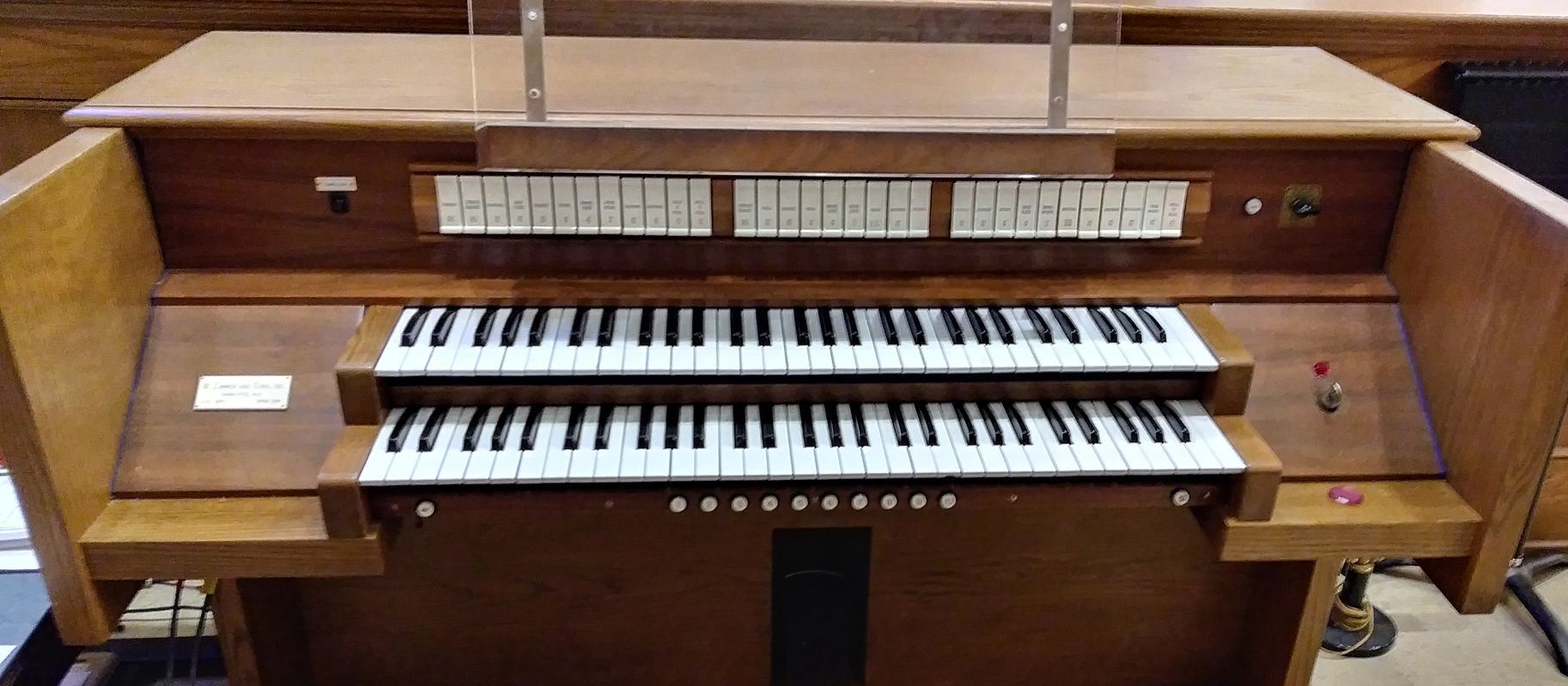
Our Pipe Organ
It was the destruction of the original church building and subsequent construction of a new sanctuary that led to the desire for a quality instrument to lead the worship of this singing congregation.
A lightning strike in 1975 sparked a fire that destroyed the building that had stood since 1892. Architect Gene Matthews was engaged to build the present sanctuary. At this time, there arose an interest in purchasing a pipe organ to replace the Hammond electronic organ that had been in the old sanctuary. Discussions were held among church officers and congregants. A vivid memory among some members is that of Janie Blackwell, then the president of the Women of the Church, giving a stirring and convincing speech as to the importance of a quality instrument to lead the sung worship of the congregation. So, in the midst of construction of the new building, it was agreed to move forward with the purchase of a pipe organ. Construction halted in order to make the necessary design modifications to accommodate the desired instrument.
Once approved, Hamilton Stoddard and her husband, Dr. Hugh Stoddard, began working with W. Zimmer & Sons to design the organ, while the entire congregation came together in a frenzy of activity to raise funds. A fall bazaar was scheduled to be held. In preparation, sewing circles were organized that met weekly for 6-8 months to make items to sell. Others worked independently at home. The men of the church constructed display boards. A publicity team formed to advertise the bazaar throughout the wider community. Their efforts included what has been described as “excellent television coverage.” Lunch was served at the bazaar, and a wide array of homemade crafts and edibles were available for purchase. The event was a rousing success. Together with donations from throughout the community, receipts surpassed what was needed to pay for the organ. The surplus was used to start a church library.
The organ was completed and installed by W. Zimmer & Sons, Inc. of Charlotte, NC in 1977, and has enjoyed periodic upgrades since that time.
Recent upgrades include the addition of ten pistons and a sequencer in 2015. The sequencer is a device that records and plays back through the pipes. It is useful in the absence of the organist as it only requires an individual to press a button to play back pre-recorded hymns and preludes. On a weekly basis, it is particularly helpful in that it allows the organist to record accompaniments for choir anthems, thereby allowing her to step away from the console to conduct the choir.
The 2020 additions required new windchests to supply air to the pipes and new racks on which to mount them. Some of the larger pipes are strapped together and anchored horizontally on the ceiling of the Great chamber. Tubing is attached at the bottom of each pipe to connect it to the windchest. Others are mounted on a rolling rack that can be moved to allow the technician easier access to all of the pipes. The largest pipes rest horizontally on the floor of the Swell chamber. The remaining pipes are mounted vertically on traditional racks.
The 2020 upgrade is the work of Stephen Spake of Lincoln Pipe Organs, Inc., located in Lincolnton, NC. The organ is maintained by Lincoln Pipe Organs, Inc.
Organ Specifications

Swell under expression
10 general pistons
13 ranks
Chimes
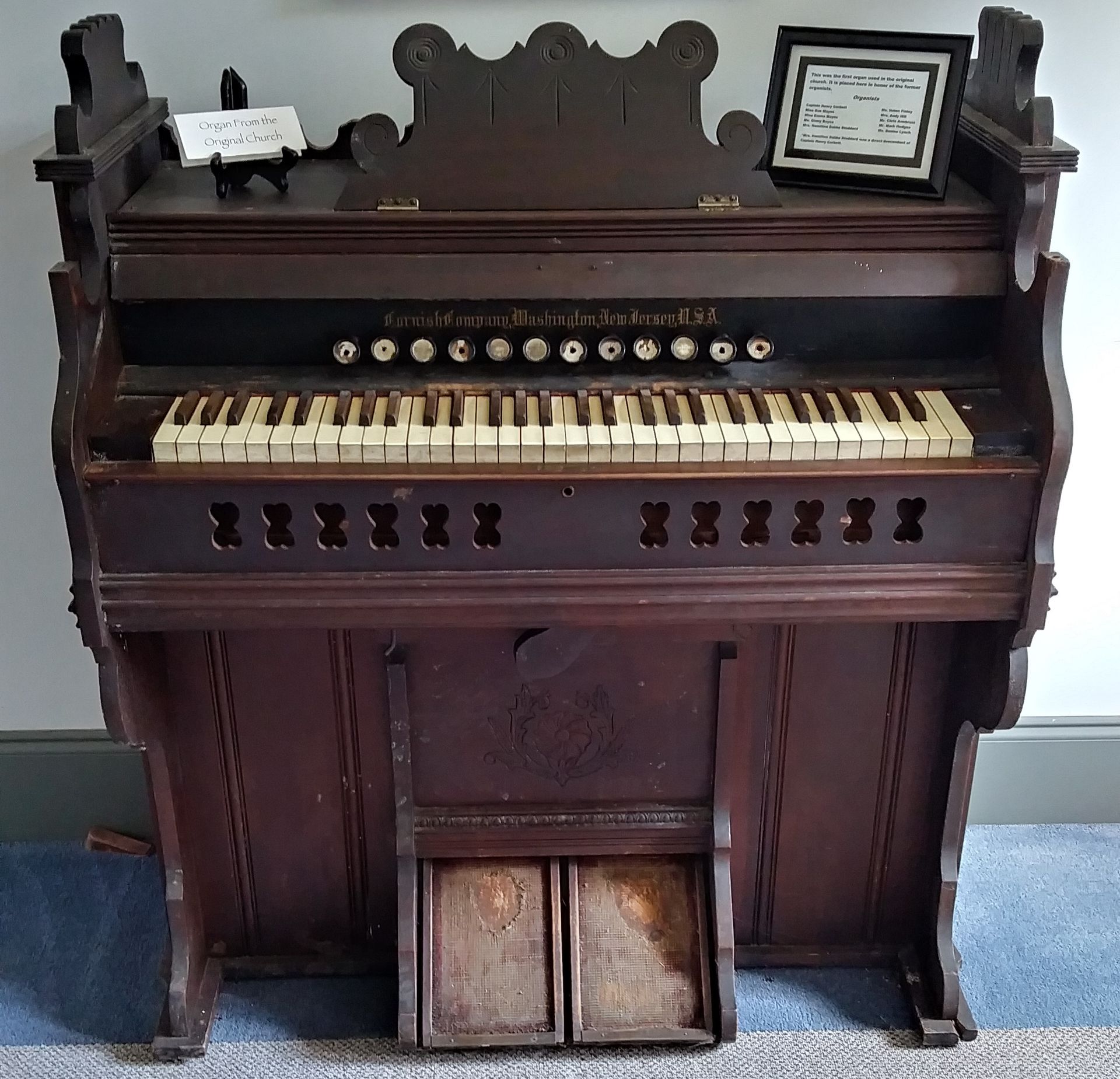
The organ from the original church building (completed in 1892 and destroyed by fire in 1975), was built by the Cornish Piano & Organ Company of Washington, New Jersey. Read about the Cornish Company at this site, as well as here.
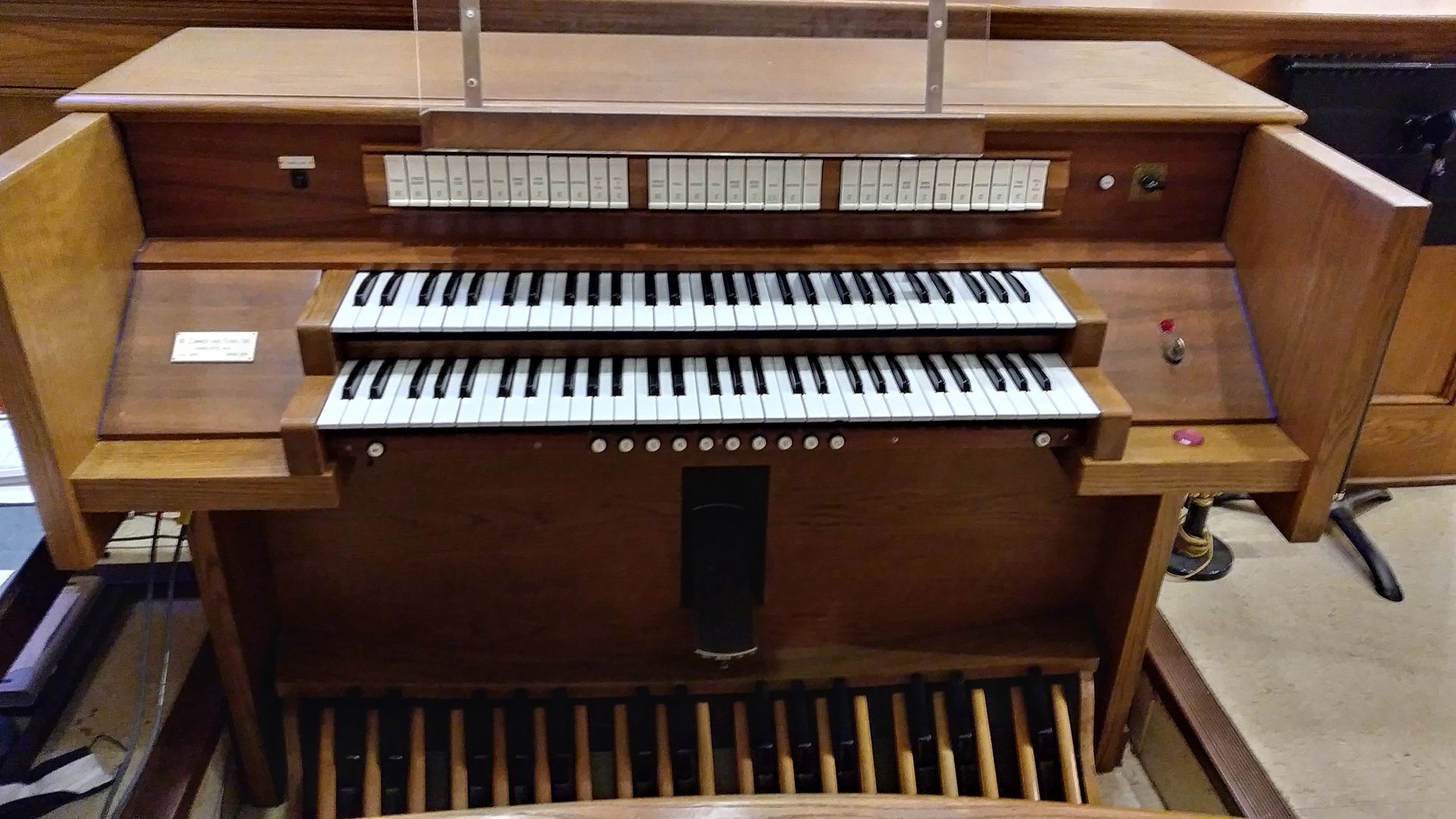
The first service in the new church building was held on April 17, 1977, but the dedication was delayed until December so that the new pipe organ could be installed and used for that celebratory occasion. It was built by
W. Zimmer and Sons, Inc. of Charlotte, NC.
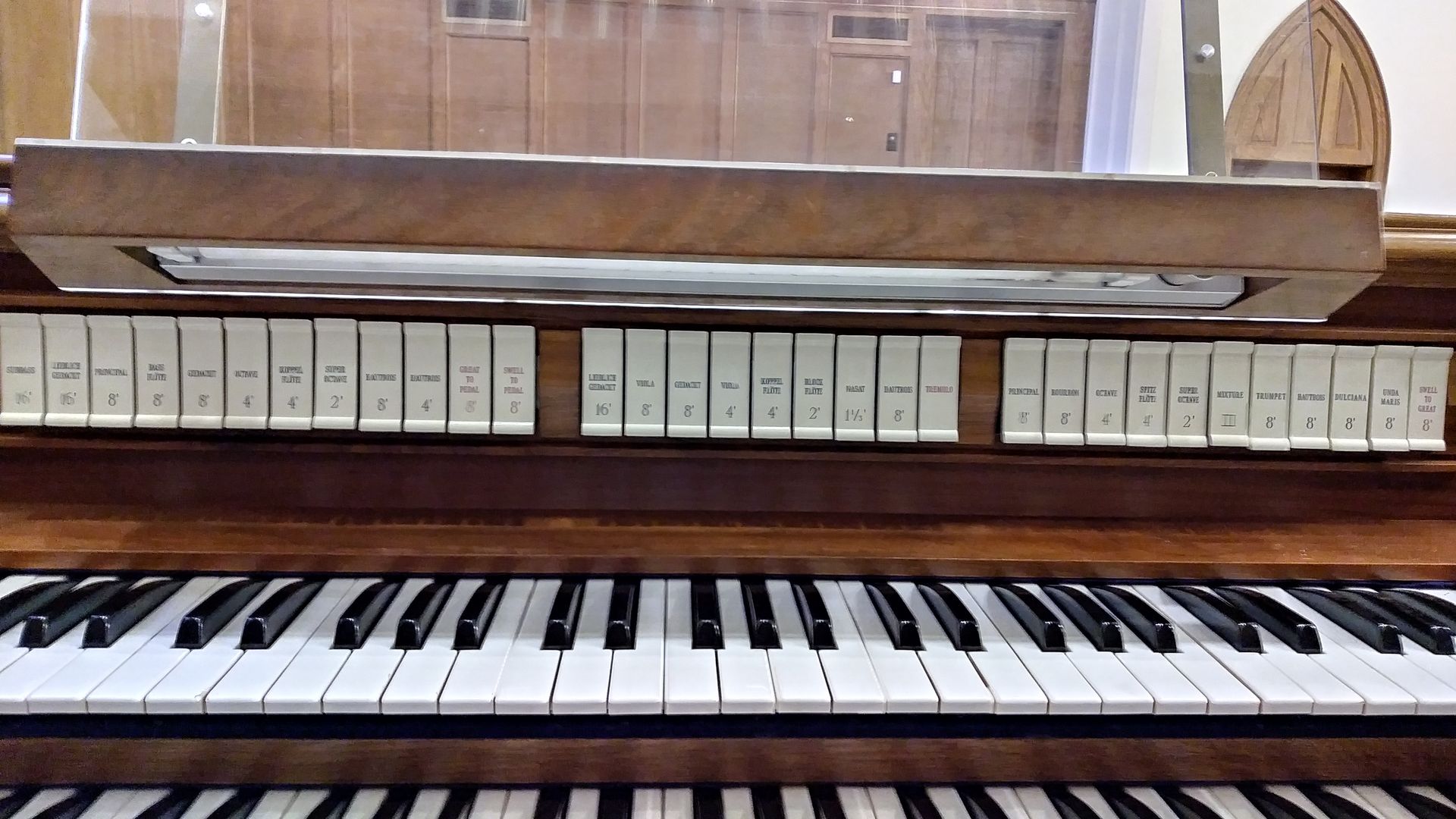
The photo above offers a closer view of the stop tabs for the organ's two manuals and pedal board.

These photos offer a peek into the Great chamber. This pipe chamber is located behind the pulpit. The Swell chamber is located on the opposite side of the chancel, behind and above the choir pews. The chimes hang in front of it.
In the picture above, a bellows (or blower) can be seen at bottom center. Notice the thin metal pipes to the right, the larger metal pipes arranged in tiers at the upper left, and the wood pipes at center. All of the pipes sit atop a windchest that uses a series of valves to provide air to each pipe when its corresponding key on the keyboard is depressed.

In the photo above, notice that some of the pipes reach to the ceiling. Larger pipes are located in the Swell chamber. In order to fit in the available space, they are positioned to lay horizontally rather than stand vertically.
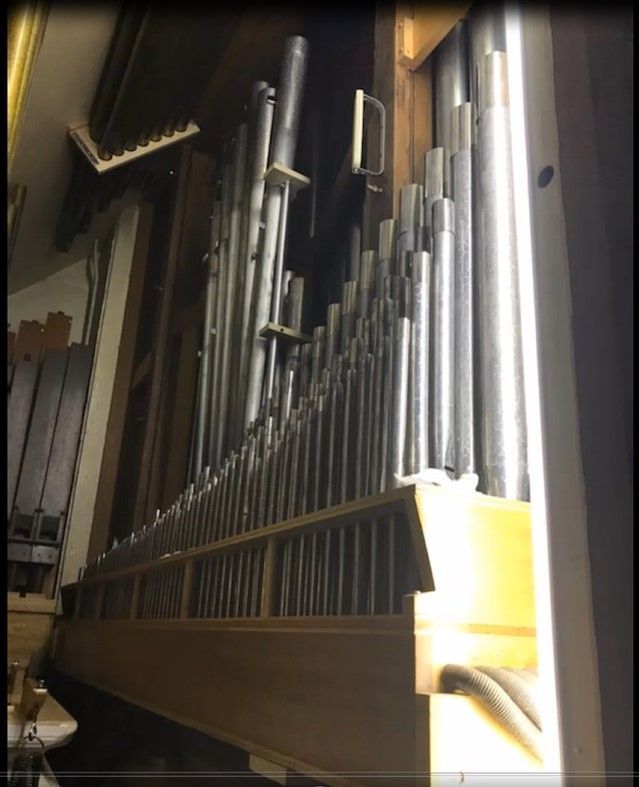
In the photo above, notice the pipes that are mounted on the ceiling. The white rack is easier to see than the shadowed pipes.
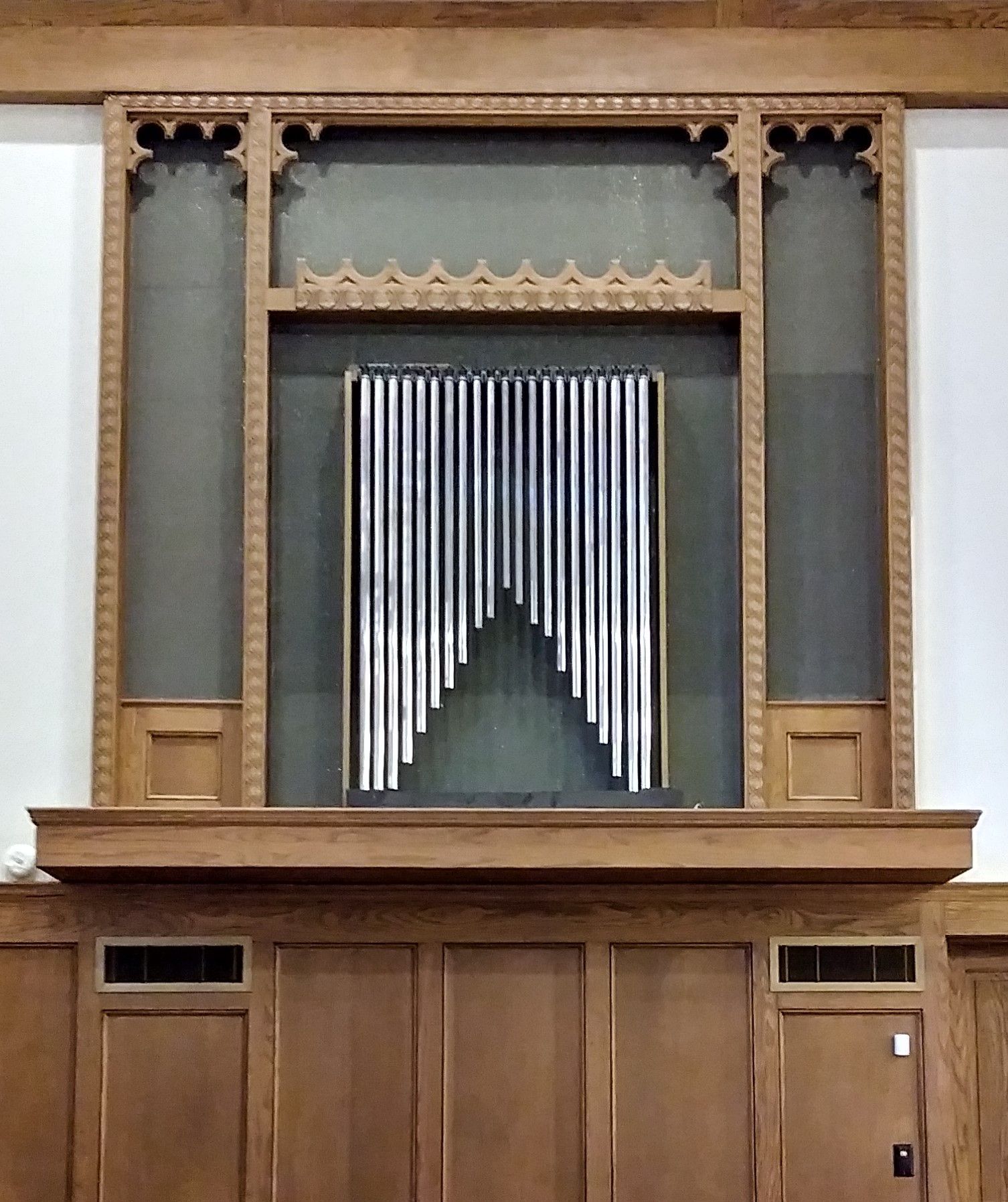
The chimes (above) and exposed pipes (below) conceal the literally hundreds of pipes housed in each pipe chamber.
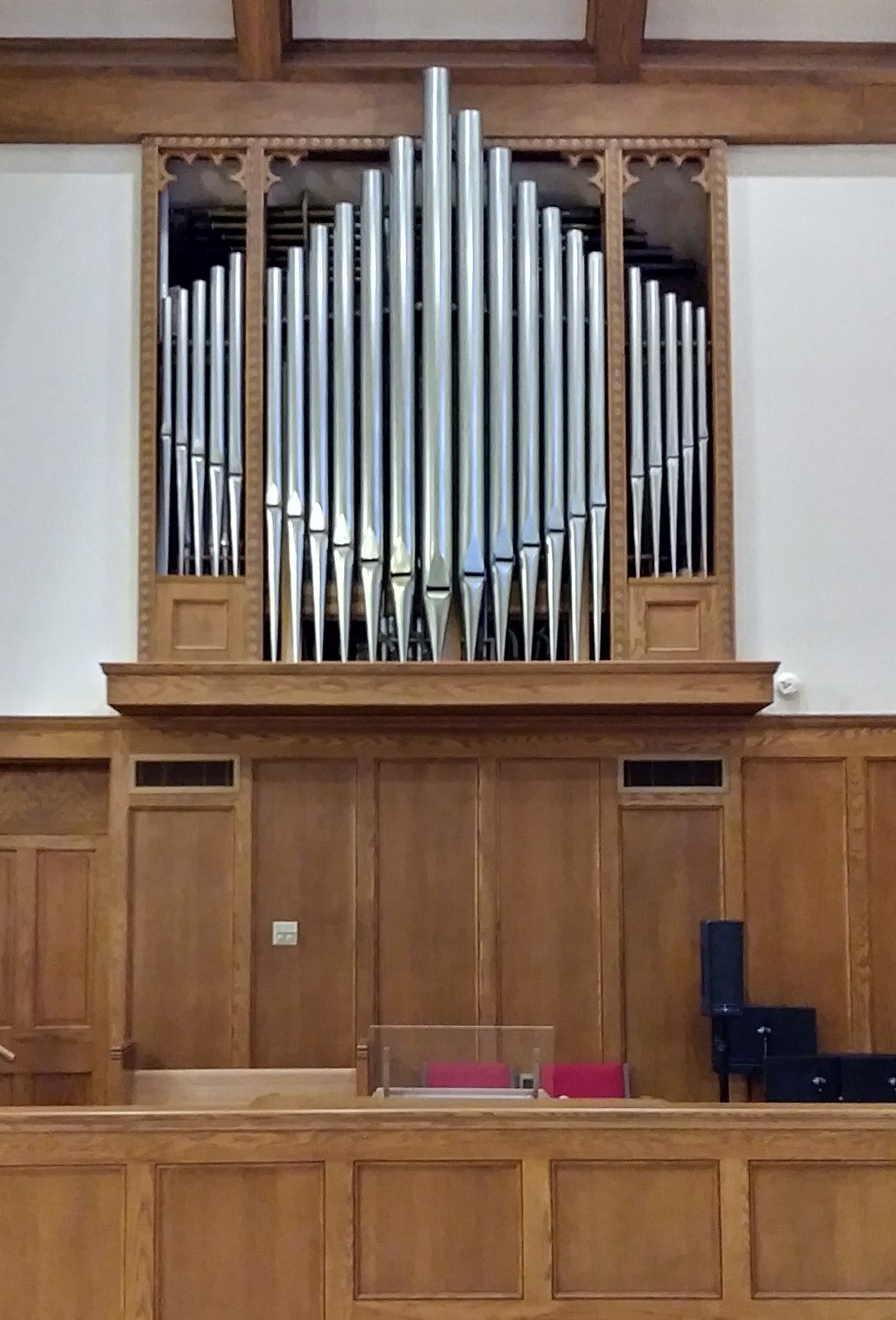
How Does a Pipe Organ Work?
In the most basic of terms, the pipe organ is a big box of whistles. Each pipe sits on top of a windchest that is filled with compressed air provided by a bellows. Tabs at the organ console represent each set of pipes (ranks) of a particular tone color. For each rank, there is a pipe for every note on the keyboard. Pressing a tab activates a slider under a specific set of pipes on the windchest, making them available to speak. The windchest also contains a series of valves connected to the keyboard by a mechanical linkage. These valves govern the flow of air to each pipe, and even though a stop may be on, no pipes will sound until a key is depressed and its respective valve opens. This allows the compressed air to pass up through the pipe for that note, creating sound.
The console – the cabinet that is situated behind the pulpit – is the cockpit of the organ. It houses the keyboards, pedal board, stop tabs, and various electrical components.
The chart to the right offers an excellent at-a-glance look at the workings of a pipe organ. (Source: The Smithsonian Magazine)
